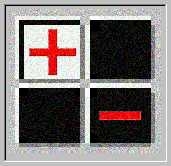
 |
Matrix of Change | |||||
| Introduction | Case study | Features | Publications | FAQ | Download | |
| Table of contents | Quick overview | Building the matrix | Interpreting the matrix |
| Step 1b: Identifying
Target Processes and Goals
Once the current state and processes has been identified, the next
step is to create a second list describing new or target practices.
Implementation of a change can be thought as the process of moving towards
a desired future state. A key to success is "starting with the end in
mind," that is, identifying the purpose or business objective of change,
whether it is organizational learning, market share, flexibility, customer
satisfaction, or something else. The current state, identified in the
previous step, describes how the organization
functions prior to the change, in terms of the organization's configuration
of strategy, activities, practices and work processes. The future state
ideally specifies how the organization should function after the change
initiative has been implemented successfully. The two states are joined
by a transition state (explained here),
which involves an understanding of the current state and an image of
the future state, and moving the organization from one to the other.
Complexity in the change initiative can arise from a multitude of factors,
driven primarily by the degree of change envisioned. The lack of a clear image of the desired future state of an organization, or of the transition difficulty, can create great uncertainty during the change initiative. Different approaches to visualizing and measuring the elements of change - the organization's existing system of policies and practices, the intended change, and the desired future state - have been developed. UPS identified what the core services of e-Logistics would be and summarized the features of the new e-business system.
Adding these practices How do I do that?to the Matrix of Change gives the following representation:
|
TOC | |||||||||
| Prev | Next |
|||||||||
| | | | | | | |